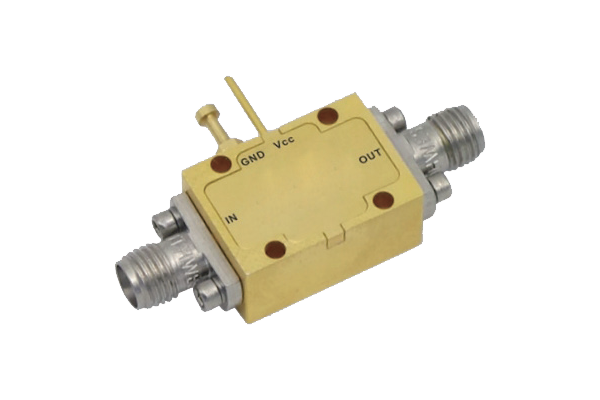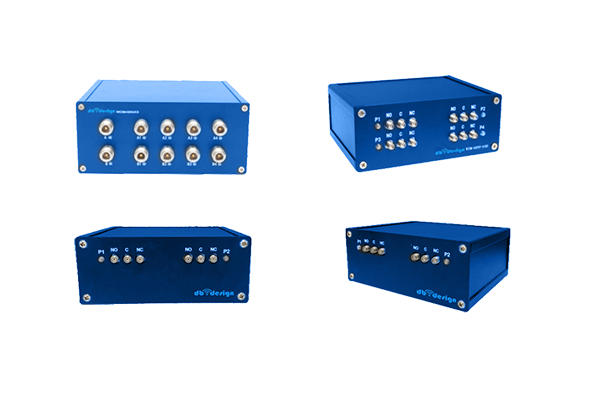
PIN diodes have evolved into key components for microwave and RF applications due to their built-in device properties Their capability to switch quickly between conductive and non-conductive states combined with low capacitance and insertion loss makes them suitable for switches modulators and attenuators. The operative principle for PIN diode switching centers on bias-controlled current modulation. The control voltage varies the depletion region dimensions at the junction and thereby alters conductive behavior. Setting different bias levels allows PIN diodes to perform high-frequency switching with minimal distortion
PIN diodes find placement inside complex circuit frameworks when precise timing and control is required They may be applied in RF filtering arrangements to selectively pass or reject particular frequency bands. Their strong signal handling properties make them practical for amplifier power divider and signal generation uses. Reduced size and improved efficiency of PIN diodes have enhanced their applicability in wireless and radar engineering
Performance Considerations for Coaxial Switch Engineering
Creating coaxial switches is a challenging task that demands consideration of a variety of technical parameters Key factors such as switch category operating band and insertion loss shape the coaxial switch performance. Superior coaxial switch design seeks minimal insertion loss alongside strong isolation between ports
To analyze performance one must evaluate metrics such as return loss insertion loss and isolation. These metrics are commonly measured using simulations theoretical models and experimental setups. Careful and accurate evaluation is vital to certify coaxial switch reliability in systems
- Simulation, analytical modeling and experimental testing are widely utilized to examine coaxial switch designs
- Factors such as temperature variations impedance mismatch and fabrication tolerances can impact switch behavior
- Novel developments and recent trends in coaxial switch design pursue performance gains alongside miniaturization and power savings
Design Strategies for Low Noise Amplifiers
Optimization of LNA gain efficiency and overall performance is critical to achieve excellent signal preservation This requires careful selection of transistors bias conditions and circuit topology. High quality LNA layouts suppress noise sources and deliver amplified signals with limited distortion. Analytical and simulation tools are vital for studying how design variations affect noise. Targeting a small Noise Figure quantifies how well the amplifier keeps the signal intact against intrinsic noise
- Picking transistors known for minimal noise contribution is essential
- Properly set optimal and appropriate biasing reduces transistor noise generation
- Circuit topology choices are decisive for the resulting noise performance
Techniques of matching networks noise cancellation and feedback control contribute to improved LNA operation
RF Signal Routing with Pin Diode Switches

PIN diode switching mechanisms deliver versatile and efficient RF path routing across designs They can be switched very fast to allow flexible dynamic routing of RF signals. PIN diodes’ low insertion loss and good isolation preserve signal quality through switching events. Applications often involve antenna switching duplexers and RF phased arrays
The switching behavior is governed by voltage driven modulation of the diode’s resistance. When off the diode’s high resistance isolates and blocks the RF path. With forward bias the diode’s resistance diminishes permitting the RF signal to flow
- Additionally PIN diode switches present fast switching low energy use and compact dimensions
PIN diode switch networks can be configured in multiple architectures and designs to support complex routing tasks. Arranging multiple switches in networked matrices enables flexible routing and dynamic configuration
Coaxial Microwave Switch Assessment and Efficacy

Detailed assessment and testing validate coaxial microwave switches for optimal function across electronic systems. Diverse factors including insertion reflection transmission loss isolation switching speed and frequency span impact performance. Comprehensive assessment includes testing these parameters under multiple operating environmental and test scenarios
- Additionally furthermore moreover the assessment must address reliability robustness durability and tolerance to severe environments
- Ultimately comprehensive evaluation outputs provide critical valuable and essential guidance for switch selection design and optimization for targeted uses
Thorough Review of Noise Reduction Methods for LNAs
Low noise amplifiers are fundamental in wireless RF systems as they amplify weak signals and reduce noise contributions. The review supplies a broad examination analysis and overview of methods to diminish noise in LNAs. We analyze investigate and discuss main noise origins such as thermal shot and flicker noise. We examine noise matching feedback loop designs and bias optimization techniques for noise mitigation. This review spotlights recent developments like new materials and inventive circuit designs that improve noise figures. Through detailed coverage of noise reduction principles and techniques the article aids researchers and engineers in crafting high performance RF systems
Use Cases for PIN Diodes in High Speed Switching

They exhibit unique remarkable and exceptional features that render them ideal for high speed switching Their small capacitance and low resistance facilitate high speed switching suitable for accurate timing control. Also PIN diodes respond proportionally to voltage which allows controlled amplitude modulation and switching actions. Their versatility adaptability and flexibility position them as suitable applicable and appropriate for a wide array of high speed use cases They find use in optical communications microwave circuitries and signal processing devices and equipment
Integrated Circuit Coaxial Switch Circuit Switching Technology
Integrated coaxial switch circuits offer advancement in signal routing processing and handling across electronic systems circuits and devices. These ICs control manage and direct coaxial signal flow providing high frequency capability with low latency propagation and insertion timing. Miniaturized IC implementations provide compact efficient reliable and robust designs enabling dense interfacing integration and connectivity
- By meticulously carefully and rigorously adopting these practices designers can deliver LNAs with excellent noise performance supporting reliable sensitive systems Through careful meticulous and rigorous implementation of these approaches engineers can achieve LNAs with exceptional noise performance supporting sensitive reliable systems By meticulously carefully and rigorously applying these methods developers can low-noise amplifier produce LNAs with superior noise performance enabling sensitive reliable electronics By carefully meticulously and rigorously applying these approaches designers can realize LNAs with outstanding noise performance enabling sensitive reliable electronic systems
- Applications of IC coaxial switch technology span telecommunications data communications and wireless networks
- Aerospace defense and industrial automation represent important application areas
- Consumer electronics A V devices and test measurement apparatus make use of IC coaxial switch technologies
Considerations for LNA Design at Millimeter Wave Frequencies

LNA design at millimeter wave frequencies faces special challenges due to higher signal attenuation and amplified noise impacts. Parasitic capacitances and inductances become major factors at mmWave demanding careful layout and parts selection. Minimizing mismatch while maximizing gain is critical essential and important for mmWave LNA operation. Device selection including HEMTs GaAs MESFETs and InP HBTs plays a decisive role in attaining low noise figures at mmWave. Additionally the careful design and optimization of matching networks is essential to ensure efficient power transfer and good impedance match. Consideration of package parasitics is required because they may adversely impact LNA performance at mmWave. Using low loss transmission lines and thoughtful ground plane designs is essential necessary and important for minimizing reflection and keeping high bandwidth
Modeling and Characterization of PIN Diodes for RF Use
PIN diodes serve as important components elements and parts within a variety of RF switching applications. Precise accurate and comprehensive characterization of these devices is essential to support design development and optimization of reliable high performance circuits. This process includes analyzing evaluating and examining the devices’ electrical voltage and current traits including resistance impedance and conductance. Their frequency response bandwidth tuning capabilities and switching speed latency or response time are likewise measured
Moreover additionally furthermore creating accurate models simulations and representations for PIN diodes is crucial essential and vital to forecast behavior in RF systems. Different modeling methods like lumped element distributed element and SPICE models exist. Choosing the proper model relies on the specific application requirements and the desired required expected accuracy
Advanced Strategies for Quiet Low Noise Amplifier Design
Creating LNAs requires meticulous focus on circuit topology and component choices to secure optimal noise outcomes. Emerging novel semiconductor developments have allowed innovative groundbreaking sophisticated design strategies that cut noise considerably.
Notable techniques include employing utilizing and implementing wideband matching networks incorporating low-noise transistors with high intrinsic gain and optimizing biasing schemes strategies and approaches. Further advanced packaging approaches together with thermal management methods play a vital role in minimizing external noise contributions. With careful meticulous and rigorous deployment of these approaches developers can accomplish LNAs with outstanding noise performance enabling trustworthy sensitive electronics
